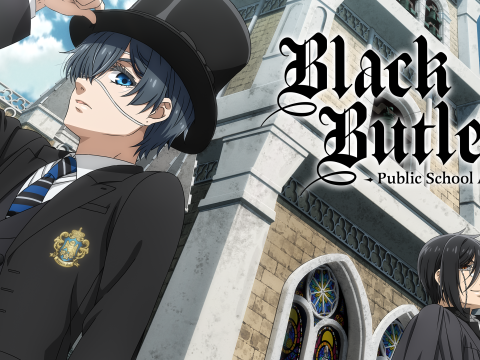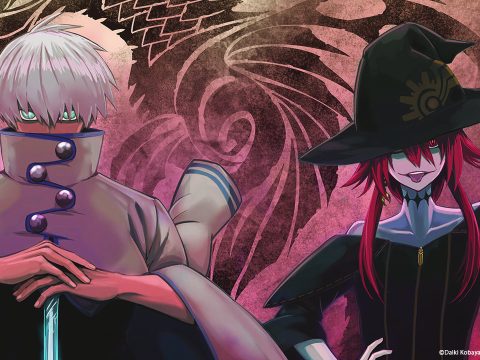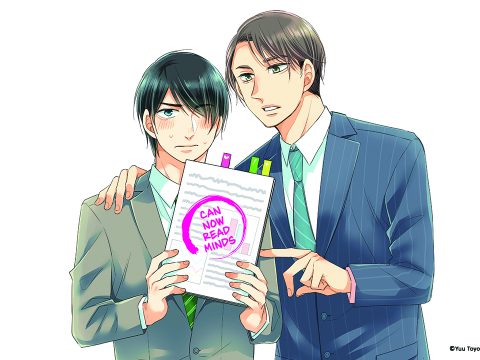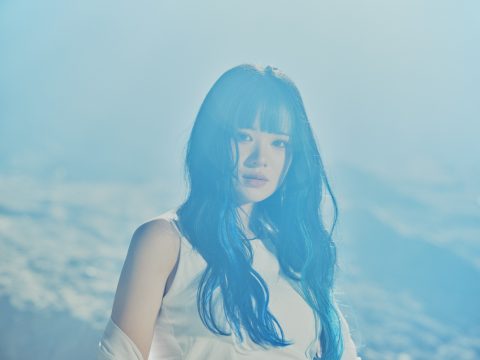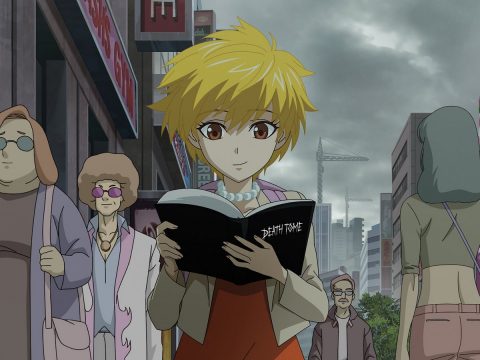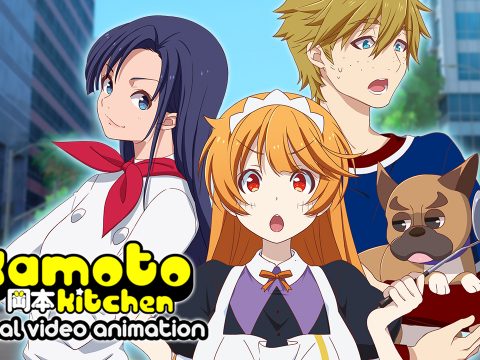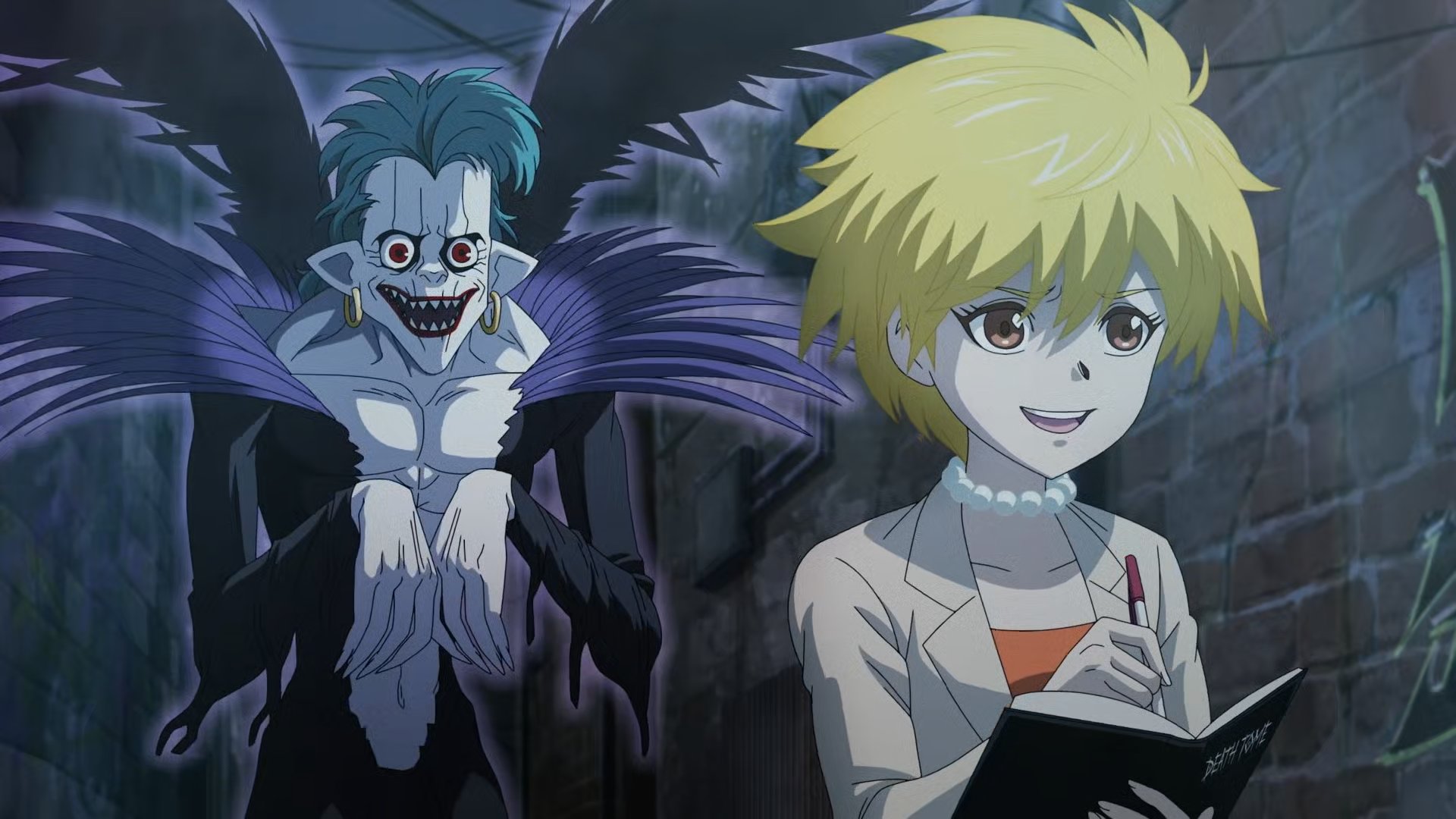
The Simpsons’ Treehouse of Horror XXXIII in 2022 included a brilliant spoof of Death Note titled “Death Tome,” nailing everything from the opulent music to the animation (using an animation studio that worked on the real Death Note!) to Lisa thinking she’s bringing justice as the Light Yagami character. This segment never would have come to be if it were not for Simpsons writer and producer Carolyn Omine, as well as her son and niece. Omine spoke to Otaku USA about the ideas behind “Death Tome,” what went into creating the spoof, and how a scrapped Studio Ghibli Treehouse of Horror segment from years ago partly made its way into the 2014 episode Married to the Blob. (Spoiler warning.)
So, what is your background in anime and manga? I know you mentioned Princess Knight.
I am half Japanese, and I grew up in Hawaii. This was pre-cable, so there were only three broadcast channels. But, in Hawaii we also had the Japanese channel, KIKU. My family watched a lot because my mother was Japanese, but actually most of the kids in my school, even the non-Japanese ones, watched anime and things like Kikaida and Ultraseven. I don’t know if you know those, but they were like precursors to Power Rangers. Kikaida was this kind of costumed karate guy, and I remember seeing the zipper down his back, like you would with Godzilla. In Hawaii, kids would just as likely have a folder with Speed Racer or Kikaida as they would with Superman. Also, all the kids knew: school supplies from the Japanese stores were way better. The best pencil cases and pencils and soft, fragrant erasers. So growing up, images of Japanese pop culture were very prevalent.
My mother is Japanese and I grew up in Hawaii. As a child, I was obsessed with “Princess Knight”. I so wanted to be a bad-assed sword-fighter in opera gloves! I spent many recesses with my knee-socks on my arms, imagining that I looked like this: @TheSimpsons pic.twitter.com/mEw3Ubm0MQ
— Carolyn Omine (@CarolynOmine) October 31, 2022
I spent a summer with relatives in Japan when I was nine. Japan is the best place in the world to be a kid. The best candy – amazing toy stores – my sisters and I were hooked on all things Japanese. And in Hawaii, when my mother would go to Japanese stores to buy magazines and books and stuff, we would get books and things made for kids. I learned to draw by copying anime images from my lunchbox and folders.
But I didn’t know Death Note. I hadn’t been keeping up with that. But my son and my niece were very into it. There’s a street in L.A., Sawtelle Boulevard, that has a lot of Japanese stores and restaurants, and we go there a lot. There was this one store where there was a Hello Kitty section and a Death Note section. So, I knew of Death Note, I knew it was “a thing” but I didn’t know what it was.
I was so excited about being in charge of the Treehouse [of Horror]. I wanted to do something that reflected my culture. I thought about doing a Hawaiian ghost story. Then I was looking for a Japanese [story], and first I was looking at Japanese horror movies. The problem was we’ve done Treehouse segments on things like Godzilla and The Ring. So I was looking super retro, like The Black Cat [Kuroneko]. Really old Japanese horror movies. Then, my son and my niece were like, “You should do anime.”
And I was like, “Of course! Yes! Anime.” It just clicked – that’s what we should do.
And they immediately said, “You should do Death Note,” and so I binged it and really, really, really liked it. I thought it was cinematic and beautifully drawn and moody. And I liked the story.
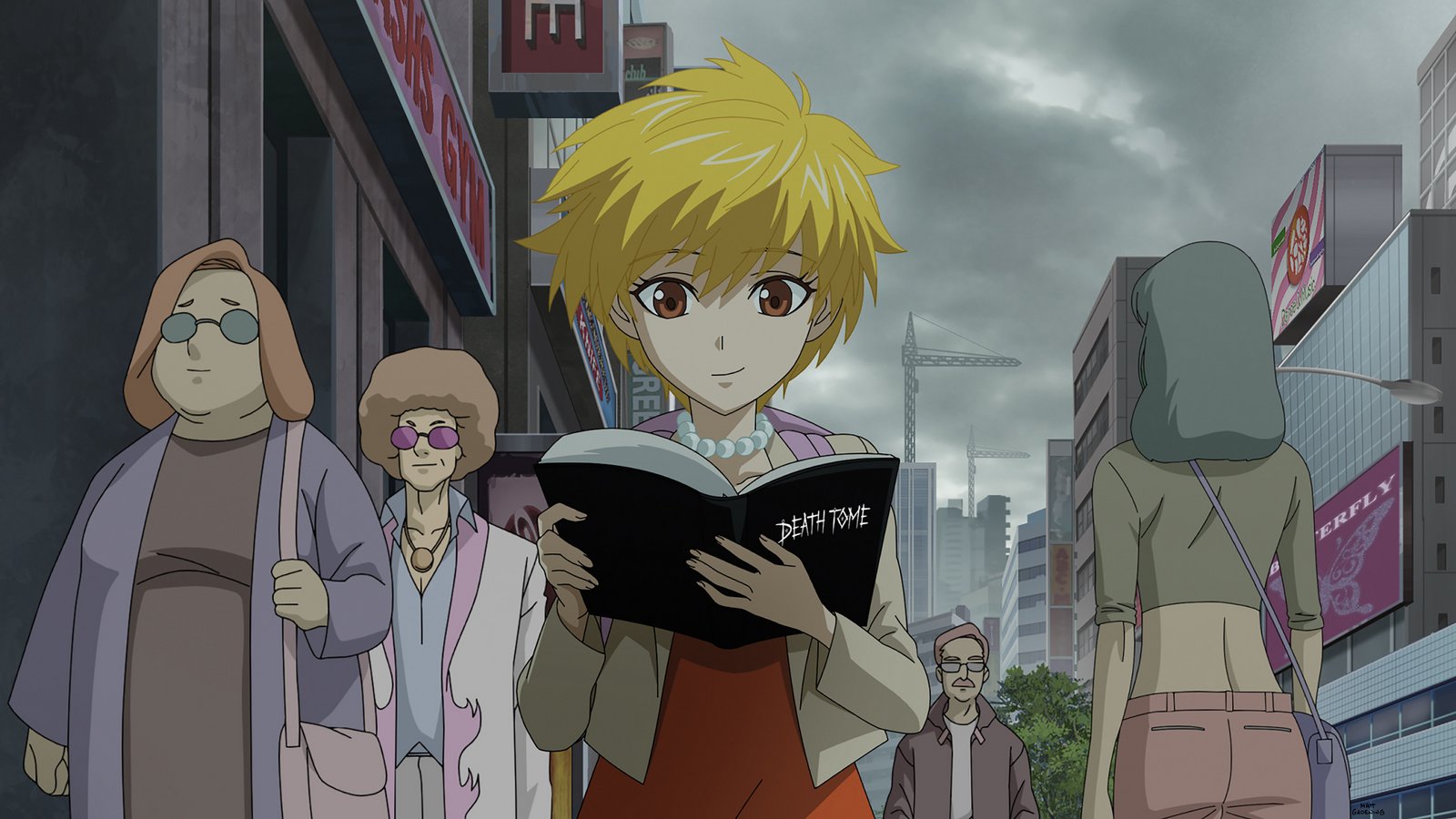
So, why did they pick Death Note? Is that their favorite anime?
I guess. They said it almost at the same time – they both watch a lot of anime but they both seemed to agree that was the perfect one for a Treehouse segment. At the time my son was 17 and my niece was 24 but they both knew [Death Note], so that said something to me. And I found out that the son of a friend of mine had gotten in trouble at school because he had a Death Note notebook. And printed on the first page it says “Whoever’s name is written here will die” so he was called to the principal’s office [laughs] because they were like, “What is this?” So just hearing how big it was amongst a range of younger people, I was like, “Okay this is something that we should probably do.” My son has since given me a list of other current anime I need to watch.
How did you pitch it? How does that work?
Well, no one else knew it except [Simpsons writer and producer Matt] Selman, because he had read the manga. So, I pitched the story and then said, “But I want it to look like this…” and I would show the room, this was over Zoom, the opening credit sequence of Death Note. By the way, this episode was produced entirely remotely. It is a product of the pandemic! When we were writing it, I made people watch the first two episodes on Netflix. The animated one [laughs], I made sure they didn’t watch the live-action one. I kept saying maybe we should get a different animation studio, like maybe someone who does anime. At first, Selman was concerned that it might hurt our animators’ feelings. So then I thought, “Well, maybe they can do it, because they are really good at aping other animation styles.” We worked out a story as a group, then we sent Ryan Koh off to write a first draft – then we re-wrote it as a group.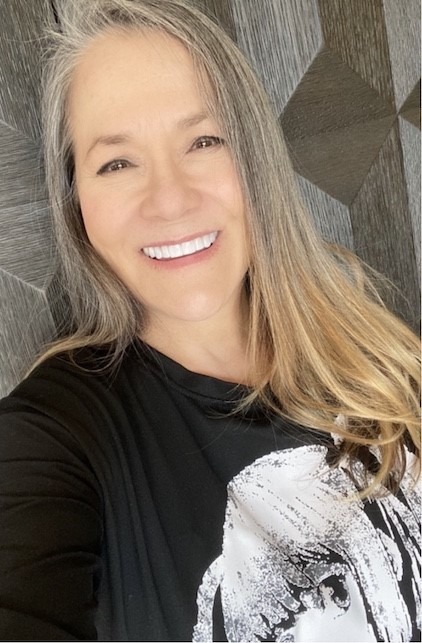
The next hurdle was to get approval from [The Simpsons producer] Jim Brooks and [The Simpsons creator] Matt Groening. The first time they hear a script is at the table read. I worried that, just hearing it read, Jim and Matt wouldn’t be able to picture how this was going to look. So, I asked [Treehouse Of Horror XXXIII director] Rob Oliver if we could come up with a quick visual – a still image to show at the table read. He told me to work with his Assistant Director, who is also a character designer, Dane Romley. On the Zoom call between myself, Rob and Dane, when we first told Dane we were doing Death Note, he reached off camera and held up the Death Note manga that was sitting on his desk. So that was a good sign!
I had a very firm idea of what I wanted Lisa to look like. I didn’t want her to be her usual 8-years-old, because I feel like, in anime, the children seem to look like a different design than adults. I wanted her to look maybe 11, 12-ish. I thought she should be a little longer and a little more grown up, to look more like Light and not so much like a little kid.
I described what I wanted to Dane and, at first Dane sent me something that was really cool looking but it was sort of halfway in between. It wasn’t going to work because it didn’t look like Simpsons or anime.
I said, “No, it’s gotta be all the way anime.” So, I took still images of Light Yagami and I drew on Lisa’s hair and pearls with Light’s blazer over Lisa’s red dress. Then Dane drew the good version of that. It looked great and worked to sell the idea of an anime Lisa at the table read. It seemed to have worked! Jim and Matt were onboard!
In Death Note’s realistic style. Lisa’s strapless, lampshade dress would look skimpy and stiff. Light’s blazer over a red dress with pearls was a good meeting place between Lisa and Light. To quickly convey this, with my limited drawing skills, I drew over a screen-grab. pic.twitter.com/jBPzGKXatO
— Carolyn Omine (@CarolynOmine) October 31, 2022
We went through storyboards and animatic with our animators. Many of our animators were familiar with Death Note. We knew there were things that were going to be much, much harder for us animation-wise. One of the most important is that Simpsons very rarely show shadows – we have shadows on the walls and underneath things but not the shadows on people’s faces and on objects. Whereas with anime, because it’s so much more realistic, the shadows are an important element of the style. In the DR movie animatics, they’ll have not just a black and white drawing, but also have pink and blue shadows, because the shadow is also animated. As you’re moving this way, the shadow’s going that way. So they’re animating two things at the same time – in addition to other elements like smoke blowing by or rain.
So, because we knew attempting anime would be so much more difficult for us , we wanted to also do all the things that anime does which makes things easier. Like a lot of close-ups where it’s just eyes so you don’t have to do lip assignment, and how people in the background don’t move a lot. And the sort of split screen kind of thing. In the animatic and in the staging, we kept looking for these opportunities to make it look like what we thought was typical of anime.
I thought we got the staging pretty good, but as the designs were coming in, Matt Selman was saying, “I don’t know. I’m worried that these aren’t anime enough.” That was when [The Simpsons animation producer] Richard Raynis said we should go to an anime house. I was like “Ooo, yes, yes!”
And so Richard Raynis went out and researched. He knows people in anime and he brought us DR Movie. Richard Raynis is the hero of this segment because he brought these amazing artists into our world. Let’s face it, the most outstanding element of this segment is the way it looks and that is all DR Movie. Director Eom and Mr. Jeong, the CEO of DR Movie and Subin Jeong, the Production Coordinator and our translator. It was an incredibly smooth collaboration. I have no doubt our animators could have come up with a believable version of anime, but it would have been a parody of anime. What DR movie gave us was not only authentic anime, it was an exceptionally beautiful version of authentic anime.
We told them all the things I’d said to Dane regarding what Lisa should look like. We told them that the city is Springfield – but it’s Springfield from another dimension. A Springfield that very much resembles Tokyo. A smoggy version of Tokyo. Tokyo is actually a very clean city – but our city had to have litter and smog because Lisa’s disgust with mankind is all about how people are destroying the planet.
Attention Freeze-Framers! We see you! We love you! This year's Treehouse of Horror is filled with Easter Eggs! I’ll tell you all about them when I live-tweet the East Coast and West Coast screenings of #THOHXXXIII this Sunday @TheSimpsons pic.twitter.com/AegWDUQGKj
— Carolyn Omine (@CarolynOmine) October 26, 2022
Our strategy was to make the city basically look like a dirty version of Tokyo with signage of shops and businesses from Springfield. We had a similar strategy for the house. I wanted it to resemble Light’s house in Death Note. To have a similar color scheme and style as the Yagami house but to have little Easter eggs that let you know it was the Simpson house. We asked for things like a baritone sax in Lisa’s room, corn-themed art in the kitchen. Sometimes, they would send us designs and ask for ideas for the art on the wall, then I would send them ideas with reference photos and they would make magic.
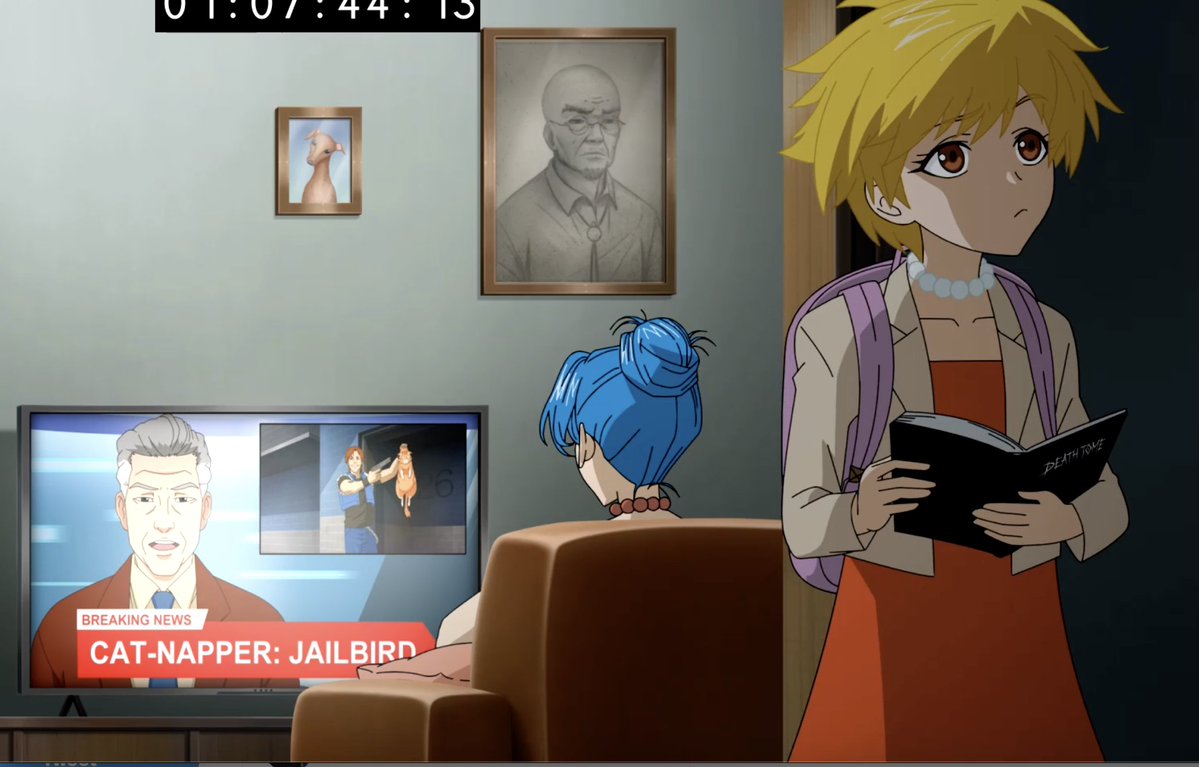
We knew we wouldn’t have the time or resources to have a lot of townspeople in the backgrounds, but we wanted a few Easter eggs walking around. Again, I sent them references of our characters as well as references of anime or real life Japanese versions of our characters.
Then they sent us their delightful designs. Honestly, every delivery from them was a thrill. Everything they did was gorgeous.
When we first approached them, it was already March so there wasn’t a lot of time. Luckily, it’s only seven minutes long and we already had the animatic. DR Movie did use a lot of the staging mapped out in the animatic and added amazing staging of their own. Things we never would have thought of. One moment I’m thinking about in particular is when you’re sort of seeing through Bart’s arm. When Lisa says, “I can’t let you stop me” and she’s reaching for her bag, I remember someone on our side giving a note, saying, “Bart’s arm is blocking the bag.” And I’m like, that’s on purpose because, one, you don’t have to animate her lifting the bag flap to pull out the Death Tome and two, it’s such a cool shot.
Every drawing DR Movie sent was sublime. Funny but also beautiful. When they started sending us animation – it was beyond anything we could have imagined. Mike Anderson told me that when they screened the completed segment for our animators, they gave it a standing ovation. Mike and I got a little emotional talking about how lucky we were to be in any way associated with this masterpiece. I’ll be forever grateful to Director Eom.
So, whose idea was it to have Light be Lisa and L be El Barto?
That was mine. For a brief moment I thought about Bart being Light. When we first decided to do Death Note, we didn’t know that The Simpsons comic book had already done it. People seem to think we [The Simpsons TV show and The Simpsons comics] are super connected, but it’s completely separate. I’m sorry to say that I haven’t read a lot of The Simpsons comics. And I told myself that I would not read that one until we finished our Death Note because I did not want to be influenced by it at all. I actually still haven’t seen it, but I’m going to because everyone says it’s great and that Nina Matsumoto is a very talented artist.
It just seemed like, story-wise, Lisa made the most sense to be Light. Because if Bart had [the Death Note] all he’d want to do is make trouble with it. Whereas Lisa would have the same thought process that Light has where she would think, “I can do good by using this Death Note.” The Death Note needs to corrupt the person using it, and Bart is sort of like . . . if you corrupt Bart, it would be a little less noticeable! [laughs] He’s already kind of naughty to begin with. But Lisa . . . and of course with only six minutes, she had to turn pretty fast, so she kills one person and is like, “I’m a hero!” and then her eyes turned red.
Bart being El… Barto. That was too fun to resist.
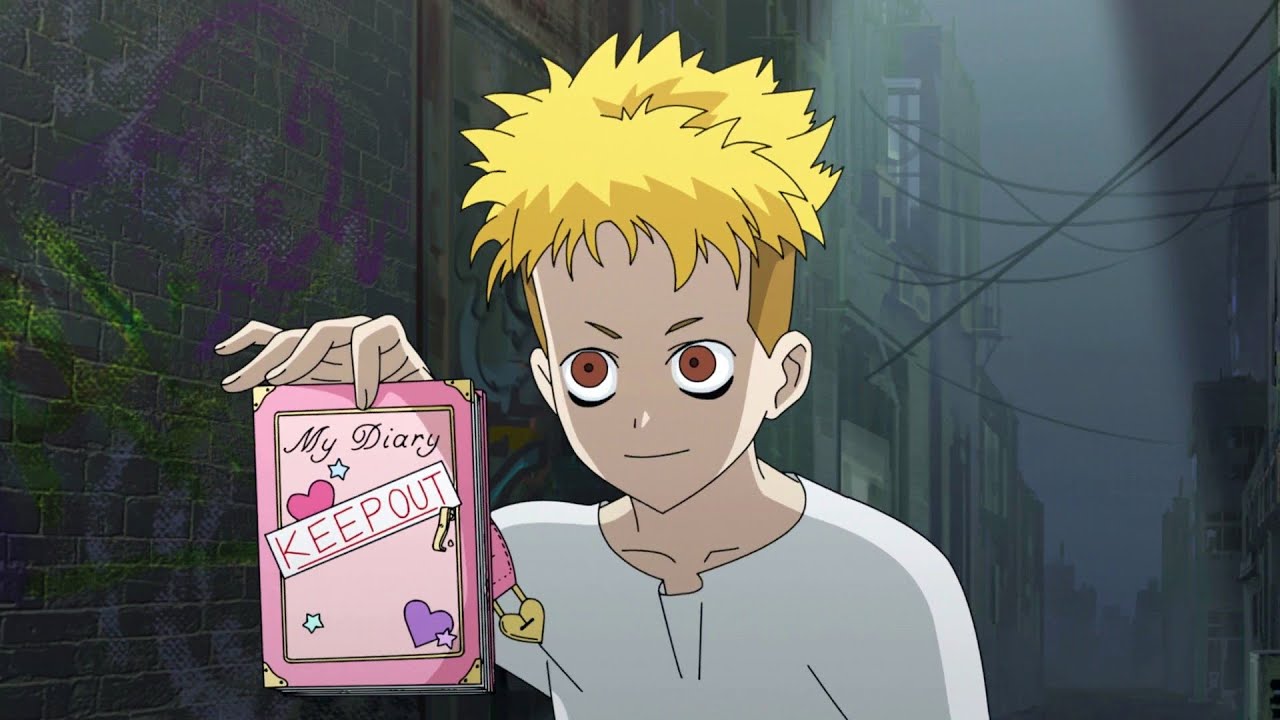
There was a brief moment of, “What if Krusty was the shinigami?” But at that point we knew we were going to be doing the “It” parody with Krusty being Pennywise [“Not It.”] So, we didn’t want to do a whole other thing with Krusty the evil clown.
On the internet some people’s reactions were like, “Who is the Shinigami supposed to be? Is that Bart?” But once we decided the Shinigami wasn’t going to be Krusty, I don’t think I thought about it being another character in the show. One aspect that I wanted to keep from Death Note is that it’s a very modern cartoon but it also incorporates Japanese folklore. So I wanted it to be just a shinigami, not like Barney or somebody that we have to explain.
I also think [Lisa voice actress] Yeardley [Smith] did such a great job. She sounds like Lisa but there is something that she’s doing that sounds very much like anime acting and that was really fun.
How did you get the music so right-on? Death Note has very distinct music.
Yes. Our super talented musicians, Bleeding Fingers Music, which are composers Russell Emanuel, Kara Talve and editor Jake Schaefer. Death Note has so many musical styles within it. I went through Death Note the series and just grabbed moments. Because Bleeding Fingers are such great musical mimics, I can just say things like: “We need this kind of Gregorian-like chant to set the tone for the beginning and the end.” And they just nail it. When Lisa says, “I have to kill Mr. Burns,” that music is a very specific kind of Japanese jazz. Lisa has a specific theme, that is similar to Light’s theme. And when we meet Bart in the alley, it’s an industrial, Nine-Inch Nails-ish version of Lisa’s theme. Russell and Kara are incredibly good at capturing the essence of a piece of music so it has the same feel as the original music and yet it’s different. I’m really pleased with the music. They did an amazing, amazing job.
This sequence is so iconic to any Death Note fan. It was very important to get it right. DR Movie did amazing work and @BFCustomMusic really delivers musically. I'm in awe of this sequence. @TheSimpsons #THOHXXXIII pic.twitter.com/A2fCsmaZxc
— Carolyn Omine (@CarolynOmine) October 31, 2022
As an aside, I loved that part with Homer as a salaryman and saying drinking was the best part of his job, with his boss after work. That was perfect.
That was Matt Selman. There were times when I was like, “I don’t know, the salaryman thing is not really part of Death Note.” But he was like, “No, I want to make this point.” I’m glad we kept that.
The Simpsons has done anime spoofs before. Are there many anime fans working there?
You mean like Pokémon, or…?
Like the Studio Ghibli thing when Homer was drunk and…?
Oh! Well, yes, [The Simpsons Co-Executive Producer and writer] Matthew Warburton was a big Studio Ghibli fan. When he went to Japan he went on the Studio Ghibli tour. Matthew Warburton had done a Treehouse [of Horror] and in it we had written a segment that was all based on Studio Ghibli movies. Mostly about Spirited Away. But at the table read, Jim [L. Brooks] was like, “I don’t know what that is.” This was my concern about the Death Note table read, because Jim did not know Miyazaki at all so he was like, “Why is the bus a cat?” [laughs] And so that whole segment was tossed out. And we had to rewrite something really quick. It became this Transformers [spoof]. . . Much later, when Comic Book Guy meets Kumiko, we did a segment where they all get drunk on snake wine. Homer has a hallucinatory dream and we got to use some of the jokes that got tossed out from the scrapped Spirited Away Treehouse of Horror episode.
Do you think that you might do another anime spoof on Treehouse of Horror in the future?
I don’t know. I don’t know. When Matt [Selman] said that I could do the Treehouse [of Horror episode], in my mind I was just thinking, “Okay, this probably isn’t going to happen again.” It might, because the show just keeps going and going [laughs] but I looked at this as my only chance, so I had to do it to the ultimate. It was a crazy amount of work. All three segments. But, I just kept thinking that this is a one-time thing. I don’t know if we would…I mean, if we could maybe find a way to do it that didn’t feel like we were repeating ourselves, we would definitely love to work with Director Eom and DR Movie again!
I am definitely up for doing other styles of animation with guest animators. We’ve had some brilliant couch gags using guest artists. I’ve been pushing for using guest animators in the body of the show. Of course, it’s an extra expense and usually means more time, so we’ll have to come up with stories that justify that.
This may be the most beautiful shot in @TheSimpsons history. Thank you DR Movie, Director Eom, Mr. Jeong, Subin Jeong, Ken Duer, @MikeUndersaw and Richard Raynis #THOHXXXIII pic.twitter.com/W6VXnqkBFZ
— Carolyn Omine (@CarolynOmine) October 31, 2022
Is there anything else you want to talk about?
I do want to talk a little more about Mike Anderson. Mike Anderson is our supervising director and he’s also a huge Halloween fan. He directed an episode I did a while ago called Halloween of Horror and we bonded over our shared obsession with Halloween. I really like the work that happens when he and I team up. Dealing with the animators in Korea, with the time difference and the language barrier, and the tight production schedule – it was more efficient to respond to creative questions just between Mike and I (running things by Selman, who was busy producing the rest of the season!) So, for example, when DR movie would send us backgrounds of the city, Mike and I would have a little chat, then I would figure out which Springfield business names would go where and then get notes from Mike. Mike would make sure DR Movie got high-resolution images of our artwork. DR Movie was always free to either use our artwork or alter it to make it more anime or more tonally correct for Japan.
And, though I know this piece is about the anime segment, I want to also point out how instrumental Mike was to the opening and closing segments, with the old leather book and Kodos’ stop-motion tentacle. Mike worked with the super-talented Chiodo Brothers. They used an actual bookbinder, and found these old books, and there is so much artistry going into all that, and anyway, Mike Anderson was all over that. Tom Klein was also instrumental with those segments – he is always instrumental, but with this episode especially. I’d also like to mention Richard Chung, who is an amazing producer. Nothing is a problem because Richard can make anything happen. We have a bunch of people like that on our show who are so good at what they do and they are a joy to work with.
____
Danica Davidson is the author of the bestselling Manga Art for Beginners with artist Melanie Westin, plus its sequel, Manga Art for Everyone, and the first-of-its-kind manga chalk book Chalk Art Manga, both illustrated by professional Japanese mangaka Rena Saiya. Check out her other comics and books at www.danicadavidson.com.


